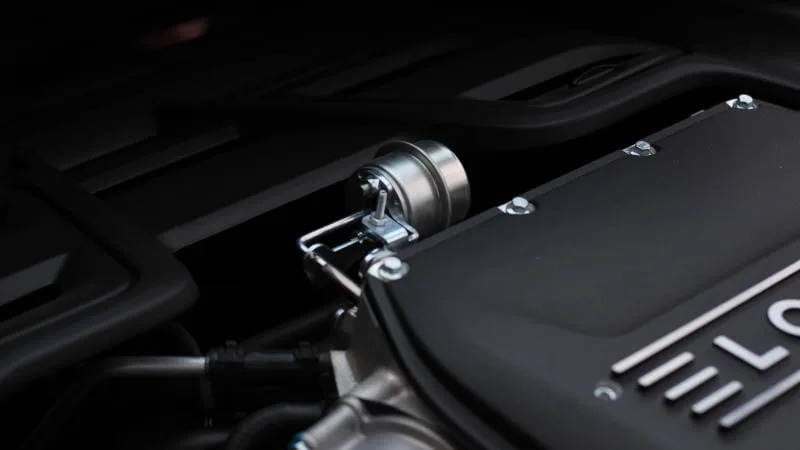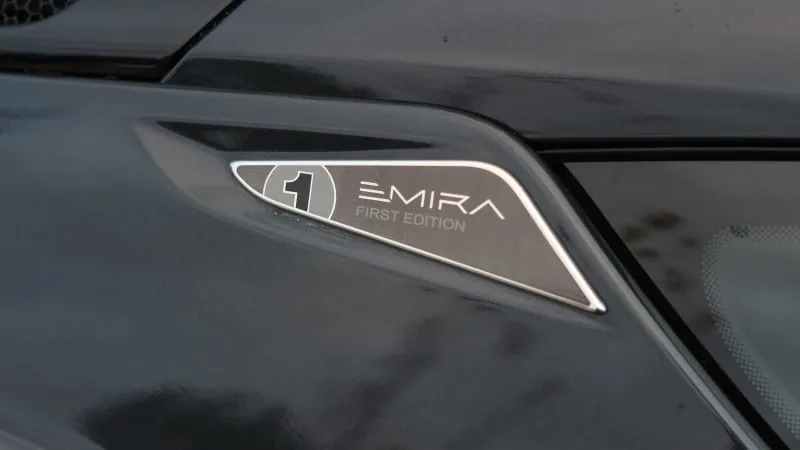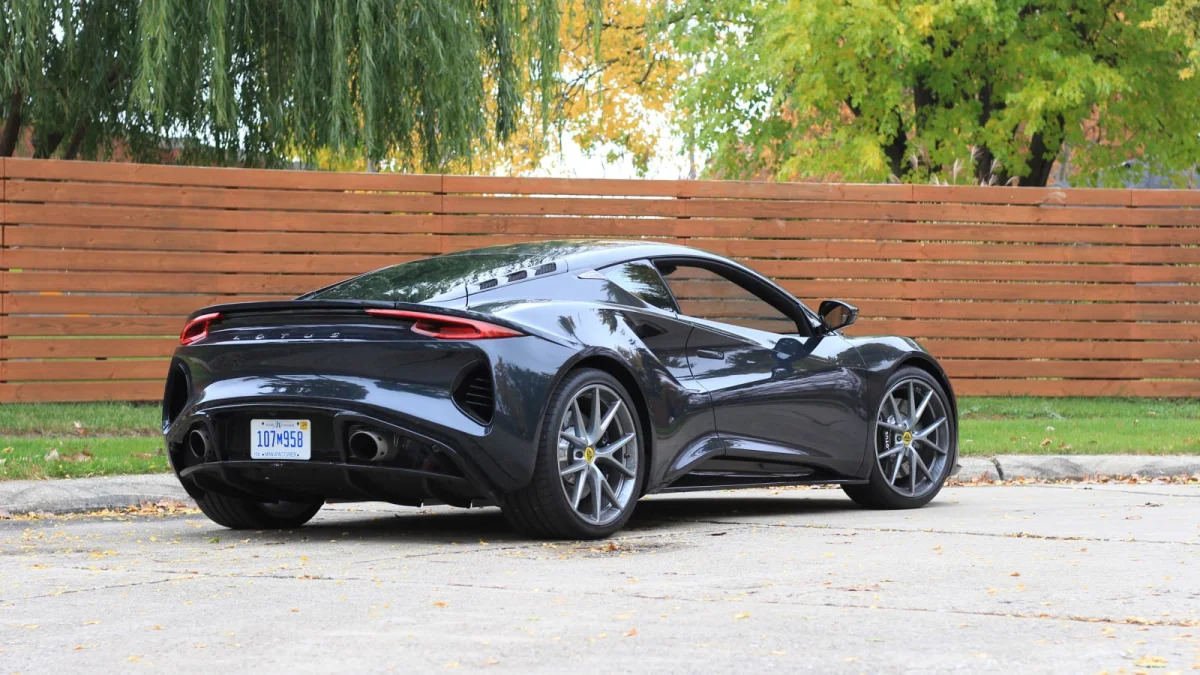Lotus Emira V6 First Edition Road Test: The most fun for $100,000

You really couldn’t script it more perfectly. The Lotus Emira is a dream sports car. It’s good that we all recognize that here and now, as far too often in the super- and sports car world, the market doesn’t realize what an astounding thing it has until sales have gone cold, and the manufacturer kills it off. Cough, Acura NSX.
In a way, the Emira is a love letter to everything enthusiasts desire about driving. Lotus is in a state of transition – the EVs are coming! The whole automotive industry is changing, and cars like the Emira are the ones we’ll point to as high-water marks for this era. Not because it has a 0-60 mph time that can embarrass competitors. Not because it pioneers any particular technology in general. Truthfully, it’s not remarkably pushing any boundaries on paper, but I’d argue, who cares?
It has an aged 3.5-liter supercharged V6 borrowed from Toyota that makes a fine – but not eyebrow-raising – 400 horsepower and 320 pound-feet of torque. That’s actually less horsepower than Evora variants like the GT and Sport 410 made, which is the opposite direction sports cars typically go in for a new generation. It has hydraulic steering, and there isn’t a single driver assistance nag in sight (don’t worry, it still has cruise control). You pick your suspension setting from the factory: Tour or Sport. It does have a few drive modes, but they don’t adjust the suspension or steering. An automatic transmission is available, but please skip that to enjoy one of the best-shifting gearboxes in the world. And oh yes, you can watch the exposed linkage work its mechanical joy. Same goes for the visible throttle actuator that can be seen in the rearview mirror through the glass separating driver from engine. Yeah, Lotus gets us.


If you’re salivating and frothing at the mouth by now, then you’re just the sort of person Lotus has in mind for the Emira. Of course, the catch with anything wearing a Lotus badge in the past was the uncertainty around buying a car from a low-production British outfit and the accompanying lack of modern amenities. Even though the Evora was a step toward Porsche in so many ways, it still felt and acted like a classy kit car with its Alpine head unit, borrowed parts and general lack of polish. The last Evora GT test car we had leaked from both A-pillars with the windows up while driving in a rainstorm. Would a factory-fresh 718 Cayman ever do such a thing? I would think not.
The Emira sets out to right all those would-be wrongs committed by the Evora. Instead of a glitchy head unit awkwardly sitting in the center stack, the Emira has a beautiful, 10.25-inch widescreen infotainment system running an in-house-designed software stack paired with an equally alluring 12.3-inch instrument panel display. The infotainment system supports both Apple CarPlay and Android Auto, and it worked flawlessly over a week in testing. The same could not be said for the Evoras we’ve driven. And not only does the infotainment system work like you’d expect any other brand’s to, it’s actually nice to use with a logical user interface and quick response times. Borrowed switchgear shows itself when you notice the Volvo volume knob and Volvo stalks, but that’s just the sort of thing we’d hope Lotus would leverage, being a part of Geely. Volvo parts are good!
But not everything’s perfect. The 10-speaker KEF (a British audio brand) system is barely even audible at full volume on the highway, which is doubly disappointing because the speaker grilles are genuinely works of art. That beautiful interior design is on display everywhere, too. There was clearly thought put into the exact blend of physical and touchscreen controls, and from the aluminum gear shifter to the seat design detailing, everything feels purposeful and designed to make life in the cabin match the expectations set by a six-figure price tag.




Like the Evora, though, as soon as you begin driving the Emira, what sort of material the dashboard covering is made of will dissipate from your brain. The lightweight flywheel is immediately noticeable as I feather the throttle trying to back out of my driveway. It’s responsible for a throttle feel and a sense of intimacy with the powertrain that simply doesn’t exist in new cars today outside of unique vehicles like a 911 S/T. Let off the throttle for too long in between shifts, and the revs dive down the tachometer – no irritating rev hang here. The pedals are so ridiculously close together in the tight box that any buffoon could nail heel-toe downshifts once you understand that the revs skyrocket with even the slightest hint of pedal pressure.
And the sound. Oh, my goodness the sound! I can promise that you’ll most likely be driving the Emira around in “Track” mode exclusively, as that’s how you get the exhaust to stay in its loudest valve setting. How Lotus manages to extract pure racecar noises from this Toyota V6 is one of the greatest modern automotive accomplishments. But it does come with a caveat for the Emira. If you were hoping for a similar volume and pitch as the outgoing Evora GT, I’m sad to report that it’s both a touch quieter and an octave lower from the driver’s seat. The Emira is a more mature car than the Evora in that way, but I’m sure it won’t take the aftermarket long to bring the volume back to ear-splitting levels.

It’s all sort of perfect from a pure feel perspective trotting around surface streets, but get the Emira on some proper roads, and it behaves just like you’d expect from any car wearing a Lotus badge. In short, it’s the most involving, natural and flat-out-fun road-legal car today that hovers around the $100,000 mark. Drive it back-to-back with cars sporting electric power steering systems, and you’ll get a quick 101 course in how futile it is for manufacturers to try and replicate real steering feel.
Lotus’ patented bonded aluminum chassis shines and excels in its lightweight glory, revealing itself to be both tossable and unflappably stable. The Tour spec suspension is the perfect companion for roadgoing fun, leaving us with zero desire for anything more extreme. The track-rat might prefer the Sports suspension setup with its standard Michelin Pilot Sport Cup 2 tires, but even the Tour setup with its Goodyear Eagle F1 rubber seems suitable for track use after a hard exercising on demanding roads (you can get the Michelins as an option with Tour). Its claimed 0-60 mph of 4.2 seconds feels spot-on and is just the right amount of thrust to feel quick, but not so quick that speeds quickly exceed reasonable limits.
The more miles I pile onto the Emira, the more I trust its chassis and the more I fall in love with how it drives. Its heavy clutch, notchy shifter and hair-trigger throttle are the most delightful tools for good, old-fashioned fun. And honestly, it’s nigh-on impossible to find any great fault or problems with the way the Emira comports itself when driven the way it’s meant to be.

Then you step across the wide sill, swing the long door shut and take a second to admire the Emira’s exterior, and its dreaminess is only solidified. It may not be a supercar from a numbers standpoint, but you could convince the uninitiated that it’s a supercar from its design. There isn’t anything about it that appears unfinished or as though it could be improved. Lotus has always designed some odd-looking cars – even the Evora was a little strange-looking – but the Emira dashes any such criticisms away.
There are still some valid critiques to level at the Emira, however. No matter how luxurious and nice that interior looks, it’s still nowhere near as refined as a similarly-priced Porsche 718. The wind and tire noise are overpowering at speed. Getting in and out does require a bit more effort than most cars. And unfortunately, I’m sad to report that the Emira’s A-pillars did in fact leak when I went to wash the car. But hey, there was less water intrusion than the Evora tester suffered a few years ago, so improvement! Insert “Aren’t these cars designed in rainy England?” joke here.
Nevertheless, I’m convinced you can’t spend $105,900 on a single car that would be more fun than the V6 First Edition I drove. There just isn’t another option out there that drives like the Emira, putting it in a class of its own for the enthusiast who wants the most unfiltered experience possible. That Lotus has sweetened the pot over the Evora with useful tech and a genuinely luxurious interior pushes it over the edge for me. This car is what driving is all about, so go enjoy it while Lotus will sell you one.
Related video:



